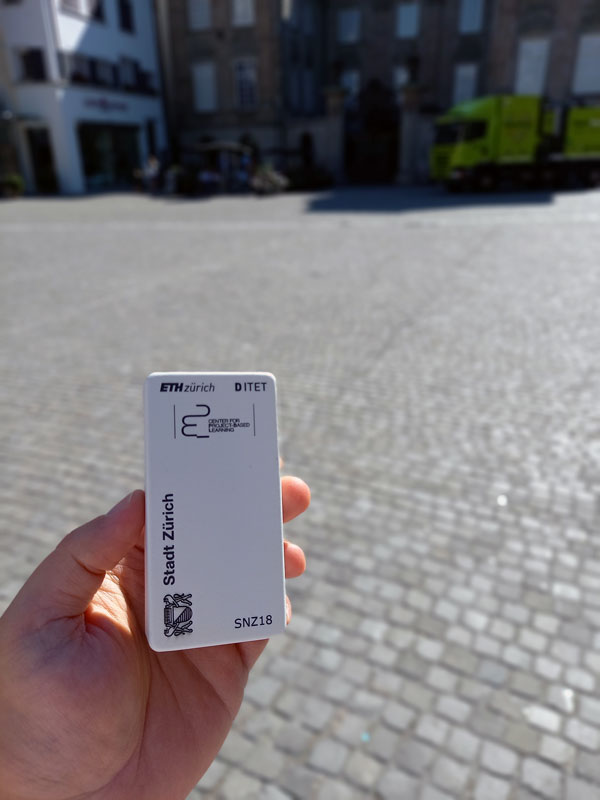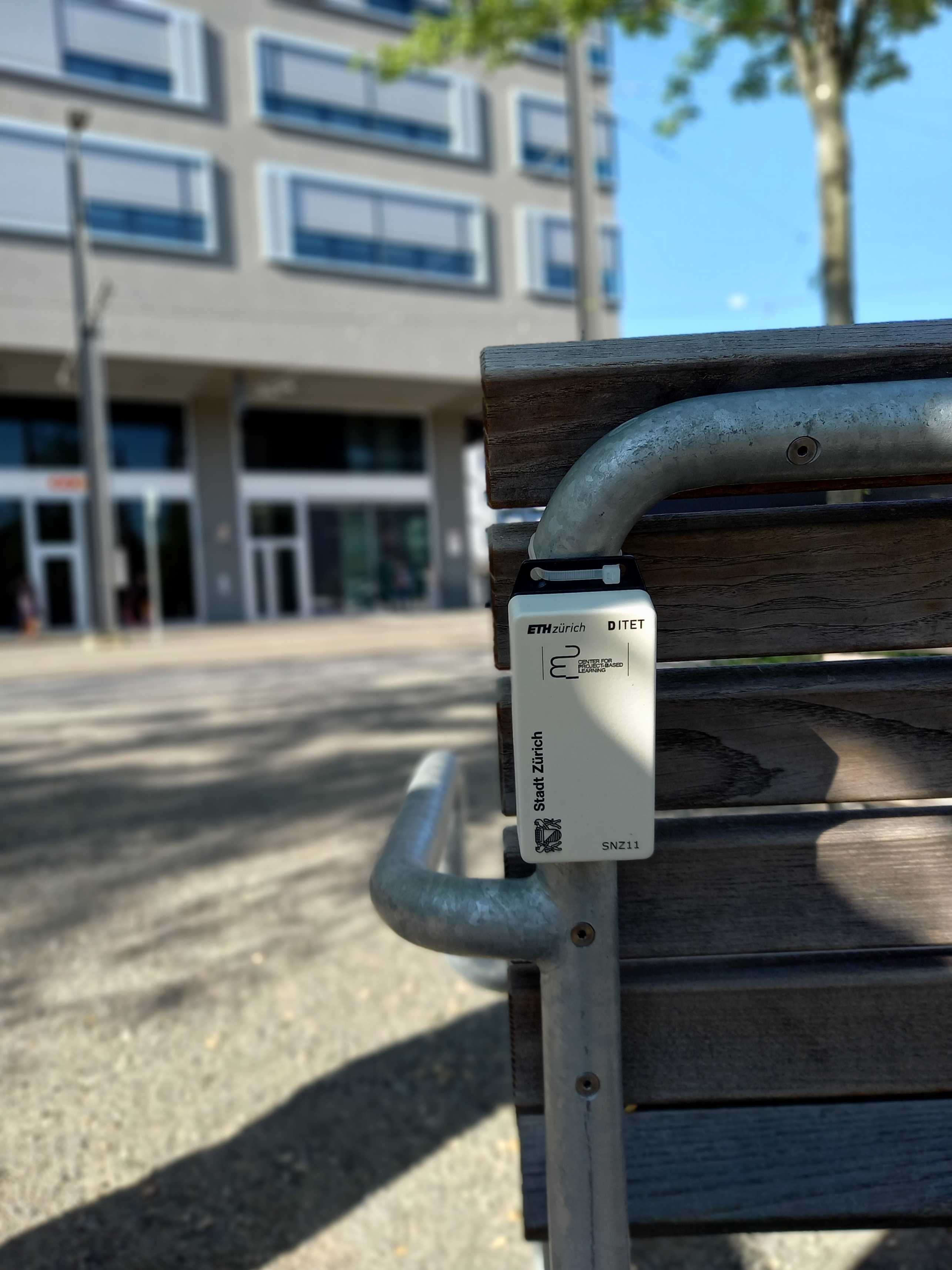Student-made sensor facilitates climate-conscious design of public squares
ETH students have developed sensors that can indicate how people use urban spaces. They anonymously measure how people use objects such as chairs in a public square. The sensors have proven useful in the test run and could be used in future to plan public spaces based on needs.

How do people behave in public spaces in cities when the weather is extremely hot – and set to get even hotter as a result of global warming? How do they use seating such as chairs provided in public places? How does the chairs’ usage change depending on the time of day, the weather or a square’s design? To answer these questions, the Civil Engineering Office and the electrical utility of the city of Zurich ran a pilot project in August and September 2022 and tested 16 of the sensors developed in partnership with ETH Zurich. They used eight sensors on Münsterhof and eight on Vulkanplatz in Zurich. Both squares differ in terms of their location and the material of the chairs. The sensors were attached to the chairs.
And the sensors registered something unexpected: one night the data spiked in relation to noise levels and chair movements. This was on 13 August 2022, when the Street Parade was held for the first time in two years following interruption caused by the coronavirus pandemic, with thousands of attendees and plenty of ravers spending the night partying on the two squares.
ETH students at the D-ITET Center for Project-Based Learning (see box) designed and built these sensors, which can measure temperature, humidity and noise levels. The sensors also provide data that can indicate the occupancy and location of each chair: “The sensor can determine the position of a chair using GPS,” explains Lukas Schulthess, the project leader on the ETH side. “An accelerometer together with an intelligent analysis algorithm are used to calculate how long someone sits on a chair.”
They also tested whether sensors can help to plan public spaces based on needs, as this type of planning is becoming more and more important in Zurich.

ETH sensors have proven useful
Today the city of Zurich has announced (see external page press release from the Civil Engineering and Waste Management Department of the City of Zurich) that the new sensors have proven useful: the wireless data transfer worked reliably in the test phase, the sensors operated without errors, and the quality of the data was good. The data analysis was also able to indicate where and how often the chairs were used.
The city also stated in its press release that the sensors could therefore be used in future to improve services (e.g. more seating or more shade) and to plan public spaces based on needs. Schulthess says this kind of data can also be generated using observations, questionnaires, tallies and cameras. “But the sensors gather this data in a more efficient, reliable, continuous and anonymous way. The data does not make inferences about individual people.”
And what does the data analysis “say” overall? In addition to similarities, it was most notably the differences in how the squares are used that became clear: The seating was used to a similar extent in both squares in the mornings and evenings. The chairs at Münsterhof square were used most often in the afternoons, while those at Vulkanplatz were used most frequently at lunch time. On Saturdays, the seats at Münsterhof square were more frequently used than those at Vulkanplatz.
In terms of the position of the chairs, it appeared that those on Münsterhof were placed in the shade when the sun was shining. On Vulkanplatz, by contrast, they remained spread across the entire square regardless of the temperature or sun. This is due to the design of the squares: Vulkanplatz has many small trees, which provide shade, whereas Münsterhof was designed without greenery.
The pilot project was run within the framework of Smart City Zurich and also involves urban computing and urban planning aspects. For ETH students, the sensor project is now complete, while the city of Zurich is looking into further potential applications.

Center for Project-Based Learning
The Center for Project-Based Learning (PBL) is part of the Department of Information Technology and Electrical Engineering (D-ITET). The PBL primarily focuses on courses with projects and practical application for Bachelor’s and Master’s students. In order to offer students innovative and realistic projects, such initiatives are often run in collaboration with industrial partners and external institutions, as in this particular case with the city of Zurich.
The PBL’s core area of expertise is in researching and developing energy-efficient, smart systems using innovative sensors, sensor fusion and edge computing (i.e. decentralised data processing in the network periphery). This enables PBL to collaborate in many interdisciplinary research fields that depend on specialised systems.
Comments
No comments yet